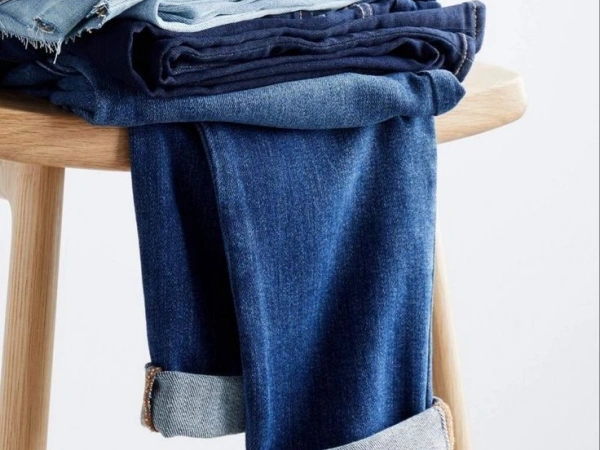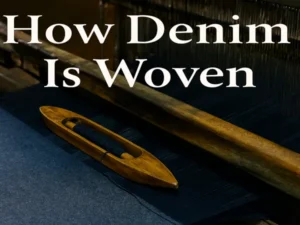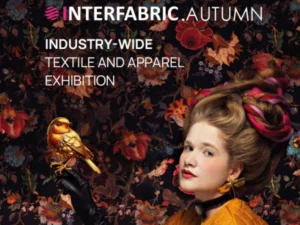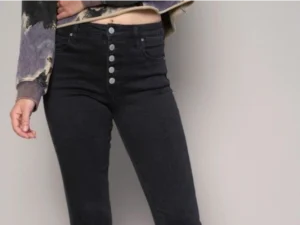Introduction
Denim, the rugged cotton twill fabric synonymous with durability and style, owes its character as much to yarn quality as to design. While consumers often focus on washes and finishes, the yarn-forming denim’s backbone determines its longevity, texture, and cost-efficiency. For manufacturers and buyers, selecting the right yarn grade is a balancing act between performance and price. China, the world’s largest textile exporter, strategically tailors its denim yarn choices to meet diverse global demands—from fast fashion to luxury markets.
Key Quality Grades of Denim Yarn
- Short-staple cotton Yarn
Definition & Characteristics:
Short-staple cotton yarn uses fibers shorter than 25 mm (e.g., upland cotton). These fibers are less uniform, creating a fuzzier surface. While cost-effective, the yarn is prone to pilling, shrinkage, and weaker tensile strength.
Applications & Limitations:
Common in lightweight denim for summer wear or budget apparel. For instance, $10–15 jeans often use short-staple yarn to keep costs low. However, repeated washing accelerates wear, making it unsuitable for long-term use.
Practical Example:
A Guangdong-based mill supplies short-staple denim to Bangladesh’s garment factories, which produce ultra-affordable jeans for African markets. The yarn’s low cost ($2.50/kg vs. $4/kg for ring-spun) enables mass production but limits product lifespan.
- Ring-Spun Cotton Yarn
Production & Advantages:
Ring-spun yarn is crafted by twisting cotton fibers repeatedly using a ring-spinning machine. This aligns fibers parallelly, creating a smoother, denser, and stronger yarn. It boasts superior softness and durability compared to short-staple or OE yarn.
Market Positioning:
Preferred for premium denim. **Lee Jeans**, for example, uses ring-spun yarn in its “Premium Select” line to ensure a broken-in feel from day one. The yarn’s strength also supports intricate distressing techniques without tearing.
Case Study:
Shandong’s supplier to Levi’s uses ring-spun yarn with a twist count of 20–22 twists per inch (TPI). This enhances abrasion resistance, critical for raw denim that ages gracefully over the years.

- Open-End (OE) Yarn
Manufacturing & Trade-Offs:
OE yarn skips multiple spinning steps, using rotor machines to twist fibers into yarn quickly. While 30% cheaper to produce than ring-spun yarn, it has a rougher hand feel and lower strength.
Global Use Cases:
Dominates mid-range denim for markets prioritizing affordability. **Shein**, the fast-fashion giant, sources OE yarn denim from Fujian’s supplier to price jeans at $20–30. The yarn’s uneven texture even mimics the “stubby” look of artisanal denim at a fraction of the cost.
Practical Insight:
A Vietnamese factory producing Walmart’s $17 “Faded Glory” jeans uses OE yarn from China. While cost-efficient, Walmart mandates a minimum tensile strength of 12 cN/tex to prevent seam slippage during washes.
- Long-Staple Cotton Yarn (Egyptian, Pima)
Superior Qualities:
Long-staple fibers (30–40 mm) like Egyptian Giza or American Pima cotton produce yarn with exceptional softness, luster, and resistance to pilling. These cottons grow in arid climates (e.g., Nile Delta, Arizona), yielding longer, stronger fibers.
Luxury Applications:
Brands like **Citizens of Humanity** use Egyptian cotton denim for $250+ in jeans, emphasizing comfort and longevity. The yarn’s smoothness also allows for deeper indigo penetration, creating richer color depth.
Supplier Example:
Jiangsu’s **Sunvim Group** imports Egyptian cotton to spin yarn for Italian luxury brand **Diesel**, ensuring compliance with the “Cotton Egypt Association” certification. Despite the high cost ($6–8/kg), the yarn’s minimal shrinkage justifies the premium for high-end markets.
- Blended and Specialty Yarns
Blended Yarns:
– Poly-Cotton Blends: An 80/20 cotton-polyester blend reduces shrinkage and adds stretch. **Uniqlo**’s “Stretch Selvedge” jeans use this blend for a $50 price point, targeting comfort-focused buyers.
– Tencel-Cotton: Blending cotton with Tencel (lyocell) enhances drape and sustainability. **Nudie Jeans** uses this blend for its “Recycled Denim” line.
Specialty Yarns:
– Organic Cotton: Grown without synthetic pesticides, it’s 20% costlier but meets EU’s GOTS standards. **H&M’s Conscious Collection** sources organic denim from Zhejiang’s **Youngor Group**.
– Recycled Yarn: Made from post-industrial waste or post-consumer denim.
Why Chinese Suppliers Favor Specific Yarn Types for Export
- Cost-Effectiveness and Global Demand
China’s dominance in mid-market denim hinges on OE and short-staple yarns. For example, **Black Peony Denim** produces 10 million meters of OE-based denim monthly, primarily for Southeast Asia.
Export Data Insight:
In 2023, 65% of China’s denim exports to India and Brazil were priced under $3.50/meter, relying on OE yarn. This aligns with regions where disposable income averages $300/month, making $20–30 jeans accessible.

- Balancing Quality and Production Scale
For EU/US markets, Chinese mills prioritize ring-spun yarn. a Levi’s partner operates 2 million ring-spinning spindles to meet the demand for 14-ounce premium denim.
Quality Compliance:
European brands like **C&A** require OEKO-TEX® certification for yarn. Shandong’s supplier invests in lab testing to ensure yarns meet tensile strength (≥15 cN/tex) and pH (4.0–7.5) standards.
- Adapting to Sustainability Trends
Case Study: Circular Denim:
Zhejiang’s **Wiser Tech** collaborates with **MUD Jeans** (Netherlands) to produce denim using 40% post-consumer recycled yarn. The process reduces CO2 emissions by 35%, appealing to Europe’s eco-conscious consumers.
Government Incentives:
China’s 2025 “Green Manufacturing” policy subsidizes mills adopting recycled yarn. **Guangzhou Denim Factory** cut costs by 12% after switching to solar-powered spinning, passing savings to brands like **G-Star RAW**.
Challenges and Considerations for Buyers
- Navigating Misleading Claims
A “100% Cotton” label doesn’t differentiate between short-staple and long-staple yarn. A Bangladesh-based brand once faced returns after using short-staple yarn labeled “premium cotton,” highlighting the need for transparency.
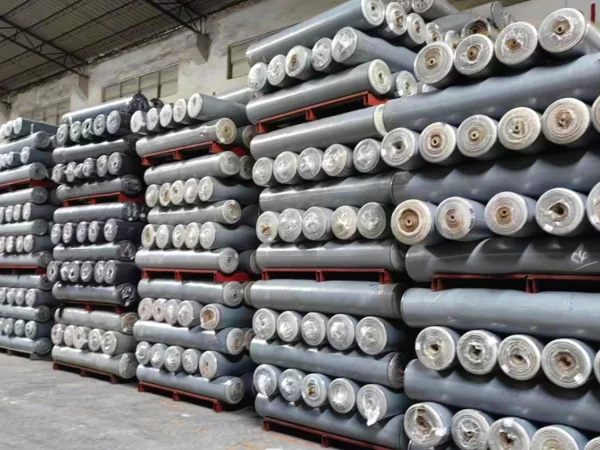
- Verifying Yarn Quality
– Fiber Length: Use a staple diagram (e.g., Egyptian cotton ≥32mm).
– Twist Count: Higher TPI (18–22) indicates stronger yarn.
– Certifications: Demand GOTS, OEKO-TEX®, or BCI certificates.
- Supplier Negotiation Tips
– Budget Range: For $10–20 jeans, OE yarn suffices. For $50+, insist on ring-spun or blended yarn.
– MOQ Flexibility: Large mills like **Esquel Group** require 10,000-meter MOQs for custom yarns, while smaller suppliers (e.g., **Denim Expert Ltd.**) accept 2,000 meters for blends.
Conclusion
Denim yarn grades—from economical OE to luxurious Egyptian cotton—cater to disparate market needs. Chinese suppliers excel by aligning yarn choices with regional priorities: OE for cost-sensitive markets, ring-spun for premium segments, and recycled blends for sustainability-driven buyers. For newcomers, mastering yarn specifications and supplier vetting is critical. As denim evolves, China’s agility in scaling innovative yarns ensures its role as the linchpin of global denim trade. By combining technical rigor with real-world adaptability, buyers can turn yarn selection from a challenge into a strategic advantage.

